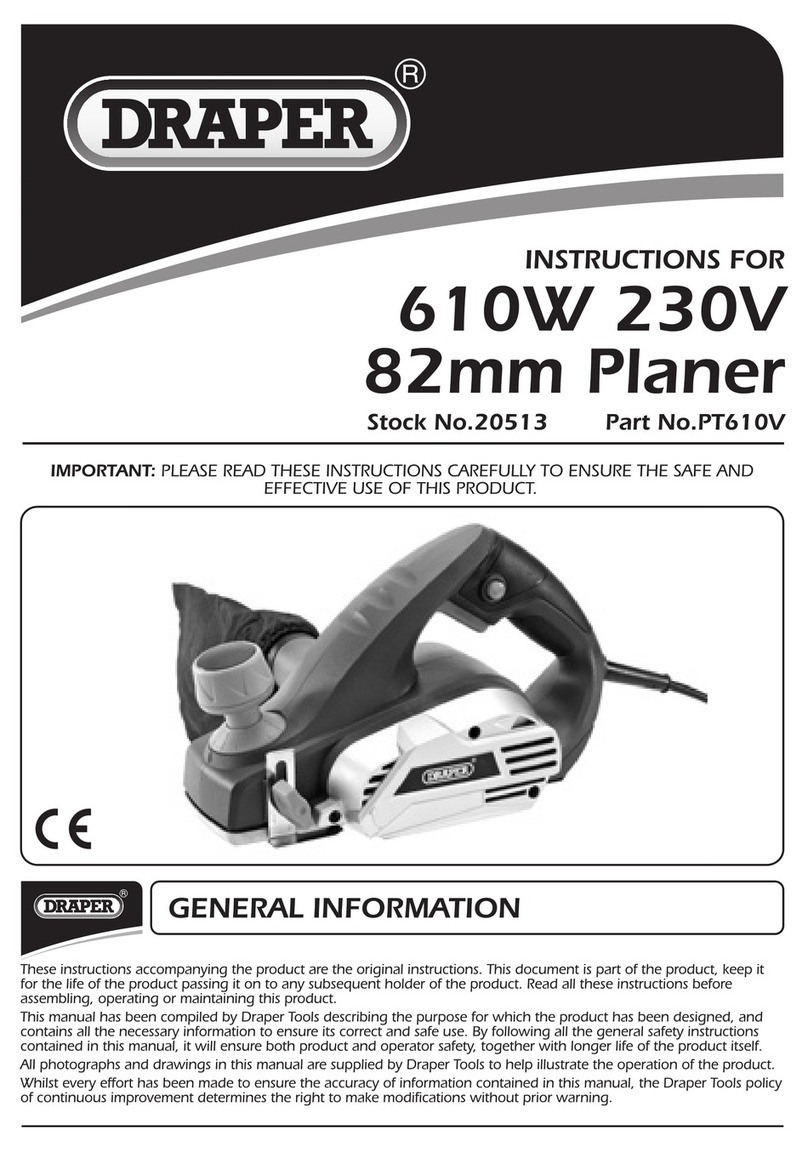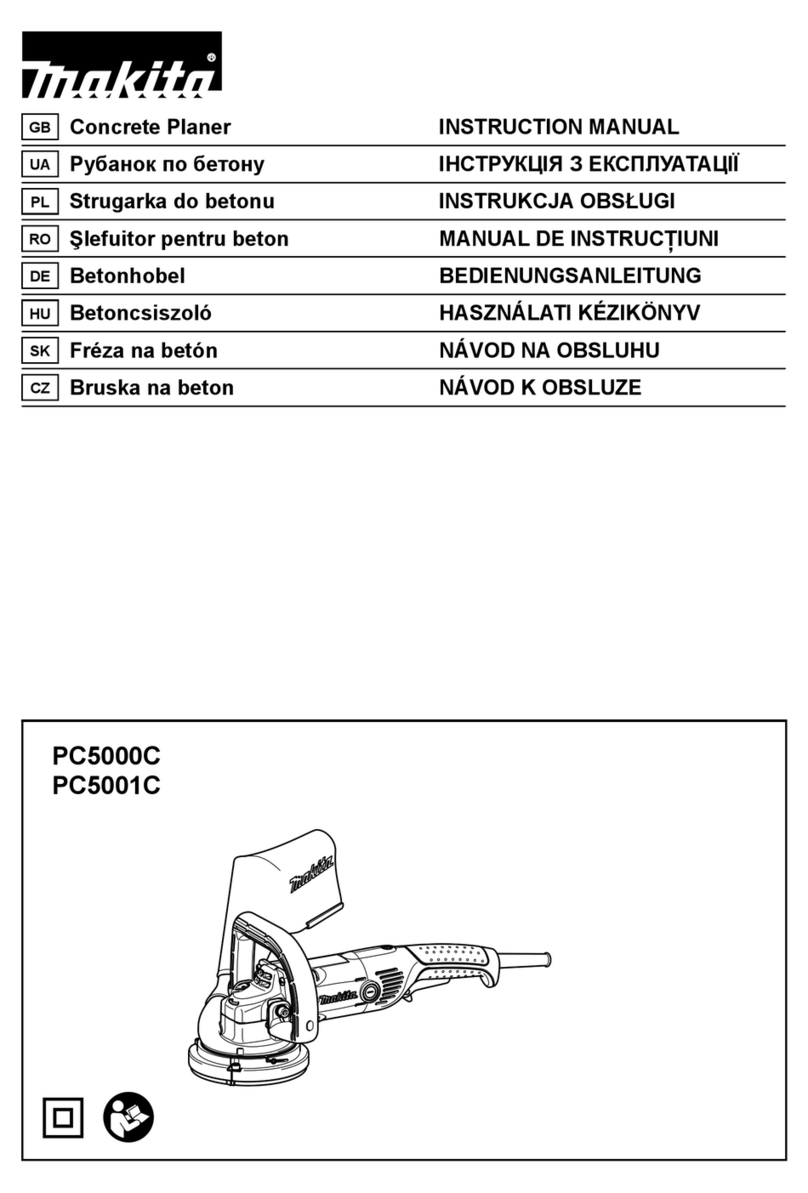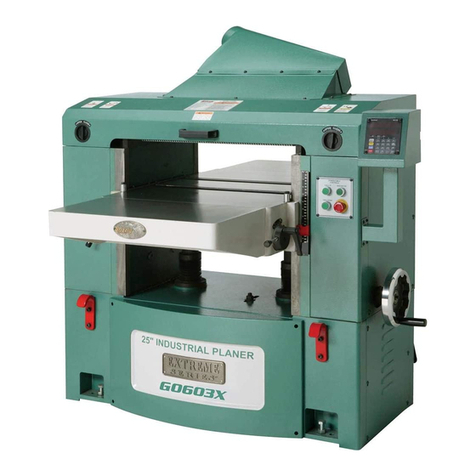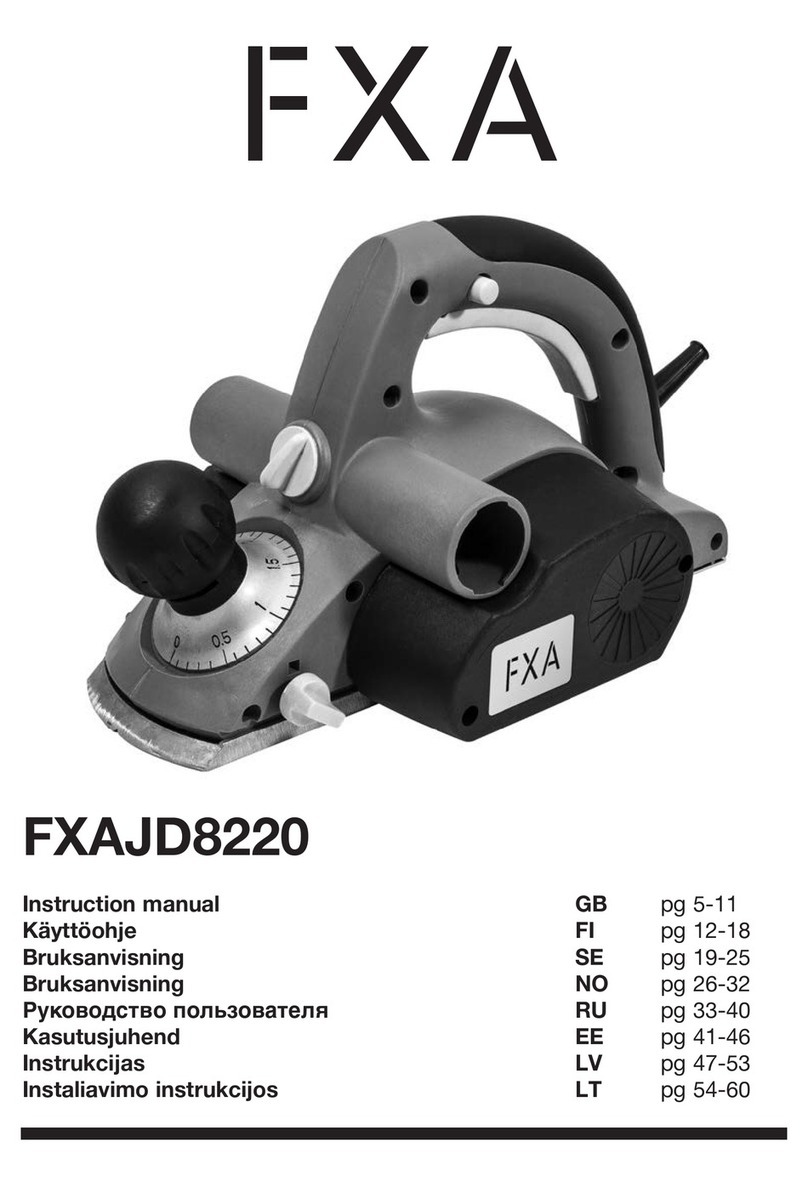
AHL83
69801224-00 STD
05-22
THANK YOU FOR BUYING OUR PRODUCT.
To ensure your safety and satisfaction, carefully read
through this OWNER’S MANUAL before using the
product.
General power tool safety warnings
WARNING Read all safety warnings, instructions,
illustrations and specifications provided with this
power tool. Failure to follow all instructions listed below
may result in electric shock, re and/or serious injury.
Save all warnings and instructions for future reference.
The term "power tool" in the warnings refers to your
mains-operated (corded) power tool or battery-operated
(cordless) power tool.
1) Work area safety
a) Keep work area clean and well lit. Cluttered or
dark areas invite accidents.
b) Do not operate power tools in explosive atmos-
pheres, such as in the presence of flammable
liquids, gases or dust. Power tools create sparks
which may ignite the dust or fumes.
c) Keep children and bystanders away while oper-
ating a power tool. Distractions can cause you to
lose control.
2) Electrical safety
a) Power tool plugs must match the outlet. Never
modif y the plug in any way. Do not use any
adapter plugs with earthed (grounded) power
tools. Unmodified plugs and matching outlets will
reduce risk of electric shock.
b) Avoid body contact with earthed or grounded
surfaces, such as pipes, radiators, ranges and
refrigerators. There is an increased risk of electric
shock if your body is earthed or grounded.
c) Do not expose power tools to rain or wet condi-
tions. Water entering a power tool will increase the
risk of electric shock.
d) Do not abuse the cord. Never use the cord for
carrying, pulling or unplugging the power tool.
Keep cord away from heat, oil, sharp edges or
moving parts. Damaged or entangled cords in-
crease the risk of electric shock.
e) When operating a power tool outdoors, use an
extension cord suitable for outdoor use. Use of
a cord suitable for outdoor use reduces the risk of
electric shock.
f) If operating a power tool in a damp location is
unavoidable, use a residual current device (RCD)
protected supply. Use of an RCD reduces the risk
of electric shock.
3) Personal safety
a) Stay alert, watch what you are doing and use
common sense when operating a power tool. Do
not use a power tool while you are tired or under
the inuence of drugs, alcohol or medication. A
moment of inattention while operating power tools
may result in serious personal injury.
b) Use personal protective equipment . Always
wear eye protection. Protective equipment such
as a dust mask, non-skid safety shoes, hard hat or
hearing protection used for appropriate conditions
will reduce personal injuries.
c) Prevent unintentional starting. Ensure the
switch is in the off-position before connecting
to power source and/or battery pack, picking up
or carrying the tool. Carrying power tools with your
nger on the switch or energising power tools that
have the switch on invites accidents.
d) Remove any adjusting key or wrench before
turning the power tool on. A wrench or a key left
attached to a rotating part of the power tool may re-
sult in personal injury.
e) Do not overreach. Keep proper footing and bal-
ance at all times. This enables better control of the
power tool in unexpected situations.
f) Dress properly. Do not wear loose clothing or
jewellery. Keep your hair and clothing away from
moving parts. Loose clothes, jewellery or long hair
can be caught in moving parts.
g) If devices are provided for the connection of
dust extraction and collection facilities, ensure
these are connected and properly used. Use of
dust collection can reduce dust-related hazards.
h) Do not let familiarity gained from frequent use
of tools allow you to become complacent and ig-
nore tool safety principles. A careless action can
cause severe injury within a fraction of a second.
4) Power tool use and care
a) Do not force the power tool. Use the correct
power tool for your application. The correct power
tool will do the job better and safer at the rate for
which it was designed.
b) Do not use the power tool if the switch does not
turn it on and off. Any power tool that cannot be
controlled with the switch is dangerous and must be
repaired.
c) Disconnect the plug from the power source and/
or remove the battery pack, if detachable, from
the power tool before making any adjustments,
changing accessories, or storing power tools.
Such preventive safety measures reduce the risk of
starting the power tool accidentally.
d) Store idle power tools out of the reach of chil-
dren and do not allow persons unfamiliar with
the power tool or these instructions to operate
the power tool. Power tools are dangerous in the
hands of untrained users.
e) Maintain power tools and accessories. Check for
misalignment or binding of moving parts, break-
age of parts and any other condition that may
affect the power tool’s operation. If damaged,
have the power tool repaired before use. Many
accidents are caused by poorly maintained power
tools.
f) Keep cutting tools sharp and clean. Properly
maintained cutting tools with sharp cutting edges are
less likely to bind and are easier to control.
g) Use the power tool, accessories and tool bits
etc. in accordance with these instructions, tak-
ing into account the working conditions and the
work to be performed. Use of the power tool for
operations dierent from those intended could result
in a hazardous situation.
h) Keep handles and grasping surfaces dry, clean
and free from oil and grease. Slippery handles and
grasping surfaces do not allow for safe handling and
control of the tool in unexpected situations.
5) Service
a) Have your power tool serviced by a qualified
repair person using only identical replacement
parts. This will ensure that the safety of the power
tool is maintained.
Safety instructions for planers
1. Wait for the cutter to stop before setting the
tool down. An exposed rotating cutter may engage
the surface leading to possible loss of control and
serious injury.
2. Hold the power tool by insulated gripping
surfaces, because the cutter may contact its
own cord. Cutting a “live” wire may make exposed
metal parts of the power tool “live” and could give
the operator an electric shock.
3. Use clamps or another practical way to secure
and support the workpiece to a stable platform.
Holding the workpiece by your hand or against the
body leaves it unstable and may lead to loss of
control.
4. Wait for the cutter to stop before setting the tool
down. An exposed cutter may engage the surface
leading to possible loss of control and serious injury.
INSTRUCTIONS FOR SAFE HANDLING
1. Make sure that the tool is only connected to the
voltage marked on the name plate.
2. Never use the tool if its cover or any bolts are
missing. If the cover or bolts have been removed,
replace them prior to use. Maintain all parts in good
working order.
3. Always secure the tool when working in elevated
positions.
4. Never touch the blade, drill bit, grinding wheel or
other moving parts during use.
5. Never start the tool when its rotating component is in
contact with the work piece.
6. Never lay the tool down before its moving parts have
come to a complete stop.
7. ACCESSORIES: The use of accessories or
attachments other than those recommended in this
manual might present a hazard.
8. REPLACEMENT PARTS : When servicing use only
identical replacement parts.
9. Before connecting this tool to the power source,
ensure that the cutter blades are mounted according
to the details in these instructions and that all bolts
are tightened securely. Loose bolts may cause the
blades to y o, causing a serious accident.
10. It is extremely dangerous to point the cutting surface
toward any person.
11. Be careful when attaching and removing the blades
as they are extremely sharp and could cause serious
injury if mishandled.
12. Never put your hands near the belt cover during
operation as it is not covered on the bottom.
13. Make sure the workplace is free from nails and other
foreign objects which could damage the blades or
cause accidents.
14. Hold the tool securely when starting, because inertia
from the motor can cause the planer to jump from
your grasp.
15. Hold the tool with both hands during operation -
holding it with only one hand is dangerous.
16. It is extremely dangerous to place ngers or objects
in the chip outlet where they could come into contact
with the rotating blades.
17. Make sure that the rabbeting cover, which protects
your hands from the blades, moves smoothly and
is completely covering the cutter blades prior to
operation.
18. Replace cutter blades as a pair. Replacing them
individually will cause incorrect balance, resulting in
vibration during operation and reduced tool life.
19. Dull blades increase the danger of kickback.
20. Keep front shoe halves as close together as work
permits.
21. The unused part of the cutter block must be
covered at all times.
22. Use the chip eject cover for planing.
23. Use safety equipment. Always wear a dust mask.
24. Before use, check the Stand device whether work
normally.
25. If it is damaged, please stop use and send to the
service center.
-
1
- -
2
-



















